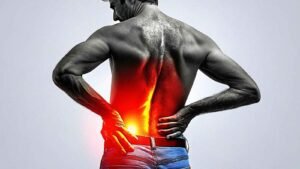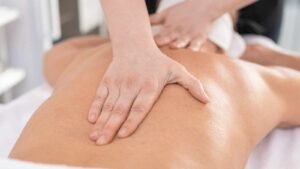Understanding Compression Therapy: A Simple Solution for Pain Relief and Circulation
Ever get that heavy, aching feeling in your legs by the end of the day? You’re not the only one. Whether it’s from being on your feet for hours, sitting too long, or just poor circulation, it adds up, and that kind of pain doesn’t always fade on its own.
That’s where compression therapy steps in. It’s not complicated. Just steady, gentle pressure on your legs that helps blood flow better. Over time, it can reduce swelling, ease that tired-leg feeling, and even help with things like varicose veins. It’s one of those simple things that make a difference.
A lot of people pair compression with physiotherapy or massage, especially if they’re recovering from an injury or dealing with chronic pain. But even on its own, the right compression gear can help a lot.
Take Sigvaris socks, for example. These are made for daily use; whether you’re standing at work, sitting at a desk, or constantly on the go. They’re designed to cut down that end-of-day fatigue and support circulation so your legs don’t feel so wrecked.
So, what’s going on under the surface? Let’s break down how compression therapy works.
How Compression Therapy Works: Reducing Swelling and Improving Blood Flow
There’s a reason compression therapy has earned a solid reputation – it works. That almost immediate relief you feel after putting on a pair of compression socks isn’t just in your head. The mechanism behind it is well studied, and the results are consistent.
By applying controlled pressure to areas like the legs, arms, or joints, compression encourages blood and fluid to move back toward the heart. It helps prevent that familiar feeling of heaviness and swelling that builds up when circulation slows, be it from standing too long, sitting still, or just the wear and tear of daily life.
For anyone dealing with tired, achy legs, it makes a noticeable difference. Instead of allowing fluid to collect in the lower legs and feet, compression gear, like the socks from Sigvaris or performance sleeves from Bauerfeind, helps the body maintain proper circulation. The result? Less swelling, quicker muscle recovery, and a feeling of lightness that sticks with you throughout the day.
There’s more to it than comfort, though. Compression can reduce inflammation and improve oxygen delivery to stressed muscles, which makes it a strong complement to physiotherapy. When someone’s managing chronic leg pain or recovering from an injury, combining both approaches often leads to better outcomes.

When it comes to joints, compression offers something just as valuable — support without stiffness. It stabilizes without fully restricting movement, which can help ease discomfort in overused knees, elbows, or shoulders while still allowing you to move freely.
Compression Sleeves for Joint Pain and Muscle Recovery: Benefits and Uses
You don’t always need a dramatic injury to feel joint pain. Sometimes, it creeps in slowly, from typing too much, poor lifting habits, bad posture, or just doing the same thing over and over again. Athletes deal with it from repetitive training. For others, it can flare up after surgery or as part of a health issue that affects the joints.
Compression sleeves? They help in more ways than people think. The pressure they apply is light but targeted – it nudges blood flow around the joint and brings down inflammation without locking anything in place. You still get to move freely, but with a bit more support where it counts.
Let’s say your elbow acts up after a few rounds of golf. Or your shoulder complains every time you pick something up overhead. That soreness builds fast. A compression sleeve gives you backup: reducing the swelling, easing the pain, and helping you recover without needing to completely stop what you’re doing.
Bauerfeind is a big player in this space. They’ve built a solid reputation in the sports world for compression gear that holds up under pressure. Whether it’s your elbow, your thigh, or your calf, their sleeves are designed to move with you and take some of the strain off the joint while you heal.
You’ll see their stuff on athletes, sure, but it’s also being used more in clinics. It’s one of those tools physios reach for when someone’s rehabbing a joint, trying to stay active without pushing too far. In those in-between stages, when rest isn’t enough, but full activity still isn’t an option, compression gives your body a better shot at bouncing back.
The Role of Compression Therapy in Supporting Calves, Thighs, and Arms After Exercise
Pulled a hamstring? Quads still sore from that weekend hike? Maybe your calves feel tight after sitting too long. Muscle pain isn’t always sharp, but it can just drag you down, slow your stride, and mess with your day. Even after the worst of it passes, stiffness can linger longer than expected.
Compression sleeves help keep recovery on track. By applying pressure to specific areas, like your thighs, calves, or upper arms, they support circulation, reduce micro-swelling, and ease muscle tension. That kind of targeted support makes a big difference, especially when you’re trying to get back to normal without pushing too hard too soon.
Compression Therapy in Sports: Enhancing Performance and Speeding Up Recovery
If you’re a runner, a regular at the gym, or someone who hits the golf course often, you already know how easy it is to tweak a muscle mid-activity. Compression can offer just enough stability without getting in the way. It supports movement, rather than limiting it.
Brands like Bauerfeind design their sleeves specifically for these high-use zones — think of your thigh during a sprint, or your calf taking impact during a jog. That extra support during activity can help reduce fatigue, and when worn after, it can speed up how quickly your body bounces back.
How Compression Therapy Complements Physiotherapy for Faster Recovery
Compression therapy works well with physiotherapy treatments at Tonic Physio to promote faster recovery from joint pain and muscle strain. At Tonic Physio, we offer a variety of physiotherapy services designed to complement treatments like compression therapy. Whether you’re dealing with leg fatigue, muscle soreness, or recovering from an injury, our team at Tonic Physio can help.
Groin Injury
Let’s say someone’s working through a groin injury. The physio might do manual therapy or prescribe strength work to rebuild function. But between sessions, a compression sleeve keeps things stable and supported, especially helpful during everyday movement.
Hamstring Strains
The same goes for quad or hamstring strains. In the clinic, treatment might involve dry needling, taping, or a focused rehab program. Outside of those sessions, compression helps keep inflammation in check and gives the healing muscles a better chance to recover well.

Recovery doesn’t just happen on the treatment table. The in-between moments matter too, and compression helps fill that gap.
When to Use Compression Therapy: Maximizing Its Benefits for Everyday Activities
Compression gear is more than just a recovery tool; it’s also something that fits seamlessly into daily routines. But to get the most benefit, timing matters. Here’s when it can make the biggest impact:
Long Days on Your Feet
Spending hours walking, standing, or even just moving around can leave your legs feeling swollen and sluggish by evening. Compression socks or sleeves help counter that by supporting circulation and preventing fluid buildup. Whether you’re at work or tackling weekend errands, they can make a long day feel a bit easier on your legs.
After Exercise
Post-workout soreness is a sign your muscles have been working hard, and they need time to recover. Compression helps by improving blood flow and reducing muscle vibration, which in turn may reduce soreness and speed up the recovery process. It’s especially useful after high-impact workouts, runs, or strength training.
While Traveling
Extended travel (especially flights) can cause circulation to slow, often leading to swelling in the ankles or lower legs. Wearing compression socks during travel helps maintain healthy blood flow and reduce discomfort. For those who fly frequently or drive long distances, they’re a smart addition to your travel bag.
Preventing Injury
If you’re active, whether in sports, gym workouts, or daily running, compression gear offers an extra layer of support. It helps stabilize joints and muscles, reducing the risk of strain or minor injuries. Brands like Bauerfeind design their gear for this kind of targeted use, offering support without restricting movement, so you can stay active and protected.
When Not to Use Compression Therapy: Key Considerations for Safe Use
While compression gear has a wide range of benefits, there are times when it’s better to hold off. Here’s when you might want to avoid it:
If You Have Circulation Problems
Conditions like deep vein thrombosis (DVT) or peripheral artery disease (PAD) require special care. In these cases, applying pressure without medical advice could do more harm than good. Always check with your doctor before using compression if you have any serious circulatory issues.
Open Wounds or Skin Conditions
Compression sleeves or socks should never be worn over irritated, infected, or broken skin. If you’re dealing with wounds, rashes, or skin infections, speak with a healthcare provider before using any kind of compression gear.
When You Need Full Rest
Sometimes the best recovery is no movement at all. If you’re healing from surgery or a serious injury, rest should come before anything else. Compression can ease discomfort, but it shouldn’t be used to ignore pain or push through when your body is asking for downtime.

Compression therapy has clear benefits, but like any tool, it works best when used wisely. Knowing when to use it and when to pause helps you get the support you need without overdoing it.
Physiotherapy and Compression Therapy: How They Work Together for Effective Healing
When it comes to speeding up recovery, physiotherapy and compression therapy can complement each other. Compression gear does its part by helping reduce swelling and improving blood flow, but physiotherapy digs deeper into what’s causing your pain or discomfort. While compression targets symptoms, physiotherapy works on the root cause, making it a longer-term solution.
Why Physiotherapy Complements Compression Therapy
Compression therapy is great for managing things like sore legs, achy joints, or muscle tightness. But physiotherapy takes it a step further, focusing on improving movement patterns and correcting any imbalances that might be making your pain worse in the first place.
If you’re dealing with persistent aches, a physiotherapist will assess the issue, help pinpoint what’s causing it, and design a personalized treatment plan to fix it. They’ll also guide you on how to use compression gear as part of your recovery, making sure you’re using it at the right time for the best results.
Combining the Two for Maximum Impact
When you combine both, the recovery process speeds up. Here’s how it works:
- Pain management: Compression can ease swelling and discomfort, while physiotherapy helps fix the deeper issues. Together, they’ll get you back to normal faster.
- Post-treatment support: After a physiotherapy session, your muscles can use some extra help, and compression gear can keep the swelling down and keep things stable while you’re resting.
- Injury prevention: Physiotherapists teach you exercises to avoid injury in the future. Add compression to the mix, and it’ll help stabilize muscles and joints, reducing the risk of re-injury.
How to Choose the Right Compression Gear for Pain Relief and Recovery
Picking the right compression gear is key. Whether you’re looking for compression socks for long days on your feet or sleeves to help with joint pain, finding the right fit matters.
1. Consider the Level of Compression
Compression gear comes in different pressure levels, typically measured in mmHg (millimeters of mercury). The higher the number, the more pressure the garment exerts. For general use, a lower level (e.g., 15-20 mmHg) is often enough. But for more intense recovery or medical purposes, higher compression levels might be needed.
2. Pay Attention to Fit and Comfort
Proper fit is crucial for effective compression. Compression gear should be snug, but not so tight that it causes discomfort. Look for products that offer a range of sizes or adjustable options to ensure the best fit.
3. Choose a Trusted Brand
Opt for brands that specialize in compression therapy, like Sigvaris, Bauerfeind, or other reputable names. These companies are known for creating high-quality, durable compression gear that offers both comfort and effectiveness.
Final Thoughts: How Compression Therapy Can Help You Recover and Stay Active
Compression therapy is a powerful tool for pain relief, muscle recovery, and joint support. Whether you’re recovering from an injury, managing chronic pain, or simply trying to boost your performance, it can be an excellent addition to your wellness routine.
By improving circulation, reducing swelling, and supporting joints, compression therapy helps speed up the healing process. When used in conjunction with physiotherapy or exercise, it becomes an even more effective part of your recovery plan.
So, whether you’re an athlete, someone recovering from an injury, or just looking to keep your body in top shape, compression therapy has a lot to offer.







